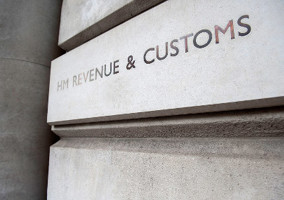The government has been gradually widening the scope of its creative industries tax reliefs since introducing a relief for film productions in 2009. Since then, films have been joined by TV and video games (2013), theatrical productions (2014), orchestras (2016) and most recently by museums and galleries, which can make claims under a new relief for accounting periods beginning on, or after, 1 April 2017. In this article we take a look at the latest reliefs. Read on and see if you are making the most out of what could be available to you.
Museums and galleries
With many museums and galleries in the process of preparing their first claims, and HMRC having published guidance on the relief for the first time earlier this year, now is a good opportunity to review the reliefs available and check that claims are being made by all eligible companies.
The relief is available to companies that are either charities, wholly owned by charities or wholly owned by a local authority. The relief would not be available to local authorities themselves as they are not subject to corporation tax. The charity or local authority must also maintain a museum, gallery, library, archive or outdoor site where objects or works are exhibited. Some entities, therefore, may wish to set up trading subsidiaries in order to take advantage of the reliefs. It is generally important that subsidiaries maintain sufficient control over the exhibition for them to qualify for relief.
The company must also be responsible for a curated, public display of scientific, historic, artistic or cultural interest. There are exclusions where anything displayed is either alive or available for sale, or if the display includes a live performer that is more than incidental to the exhibition. A display will still be considered “public” if visitors are charged for admission.
A claiming company can either be responsible for the exhibition as a whole, or just at a particular venue for touring exhibitions.
There is a cap on the amount of expenditure that can be treated as eligible for museums and galleries tax relief, and that cap is set to £500,000 per exhibition. Companies receive relief equal to the lower of their EEA-based (European Economic Area) core expenditure and 80 per cent of their worldwide core expenditure. Core expenditure refers to the costs of producing an exhibit and, if the exhibition is open for 12 months or less, on the deinstalling and closing of the exhibition. If the exhibition is to be at multiple venues then storage costs at a non-venue site for up to four months can also be claimed.
If the exhibition is loss-making after the enhanced deduction, then the loss can be surrendered for a tax credit equal to 20 per cent of the losses surrendered for non-touring exhibitions and 25 per cent for touring exhibitions.
The value of the tax credit is capped at £80,000 for non-touring exhibitions and £100,000 for touring exhibitions.
Orchestras
Orchestra tax relief (OTR) has been around slightly longer, but there may still be many entities eligible to claim that have not yet done so.
OTR is available for companies that produce concerts in which the number of instrumentalists will be at least 12, and in which none, or a minority, of those instruments are to be electronically or directly amplified. There are additional requirements that the concerts are to be performed live either to a paying public or for educational purposes and that at least 25 per cent of core expenditure is incurred in the EEA.
The relief operates in much the same way as the relief for museums and galleries. It is available on expenditure involved in producing the concert or concert series, excluding some support activities and expenditure on the actual performances themselves (such as payments to musicians for their performances in the concert or concert series).
Claiming companies receive an additional deduction equal to the lower of their qualifying EEA core expenditure and 80 per cent of their worldwide core expenditure. Where, after this deduction, the company has made a loss on the concert or series, it can surrender the loss for 25 per cent of the amount surrendered. Unlike for the relief for museums and galleries there is no £100,000 cap on the amount of the credit that can be received.
Companies should note that only one company can claim in respect of each concert or series, and this will be the company with overall control and responsibility for the production. Therefore co-productions should be organised such that one company retains that final responsibility.
Theatres
Theatre Tax Relief (‘TTR’) has now been available for almost four years, and as a result many theatres are familiar with its workings.
TTR is available to plays, operas, musicals and ballets, with the principle feature being that it mainly consists of live performers playing roles. There are exclusions for advertisements and promotional performances and performances that include competitions, feature wild animals, are of a sexual nature, or are performed with one of the main objects being to make a recording of the production.
The claim works broadly in the same way as OTR. An enhanced deduction can be taken in respect of costs incurred between a project being greenlit and its opening night, and costs incurred in closing the production after the final performance. It cannot be claimed for indirect expenses such as financing, marketing, legal services or storage, and it cannot be claimed for ordinary running costs of the production. Exceptional costs during the production’s run (such as a substantial recasting or redesign of the set) may still be eligible for relief. At least 25 per cent of these eligible costs must be incurred in the EEA.
The producing company can claim an enhanced deduction equal to the lower of its qualifying EEA core expenditure or 80 per cent of its worldwide core expenditure. If the company is loss-making after this deduction, then it can surrender the loss for a repayable tax credit. The credit is valued at 20 per cent of the surrendered losses for a non-touring production, or 25 per cent for a touring production. As with OTR, there is no £100,000 cap on the relief available.
Theatres should also be aware that no more than one entity can claim for each production, and therefore co-productions should be structured so that one company maintains overall control and responsibility for the production.
Luke Savvas is charity tax partner at Buzzacott
This is an advertising feature.
Related articles












